White-breasted Whistler
Pachycephala lanioides
The White-breasted Whistler is a small and distinctive inhabitant of mangrove habitats in northern Australia. The species is strongly sexually dimorphic (males and females have different morphology) with the males exhibiting a chestnut stripe across the breast.
Morphology
The White-breasted Whistler is commonly 18-21 cm.
Males have a black head and nape (back of the head) and white throat and cheeks. The black from the head extends down onto the breast to form a band under the white throat. Under this black band is a chestnut band, with the rest of the belly being white. The back and wings are grey, with a black tail.
Females are mostly pale grey and brown, with white cheeks, throat and belly. The throat and cheeks are normally streaked.
Evolution
The White-breasted Whistler belongs to the Family Pachycephalidae, which includes the whistlers, shrike-thrushes, shrike-tits. They are Australasian in distribution, extending from south east Asia to Australia, including New Zealand and many Pacific islands. The White-breasted Whistler is most closely related to the White-bellied Whistler (P. leucogastra), found in New Guinea. Molecular phylogenies also place it with the Rufous Whistler (P. rufiventris), which is found throughout Western Australia. In Western Australia, areas where mangroves do not grow break up the distribution of the White-breasted Whistler. These areas have been tested as long-term barriers to dispersal, and the possibility for populations to be distinct on either side of these barriers.
Behaviour
The White-breasted Whistler forages among mangroves, and on mud at low tide, where it feeds on small crabs and other marine organisms.
Method of reproduction
sexual
Habitat
Terrestrial
The White-breasted Whistler is restricted to mangroves.
Distribution
The White-breasted Whistler is found distributed across the Australian monsoonal tropics, but does not extend east of Normanton, in the Gulf of Carpentaria in Queensland.
Not endemic to Western Australia.
In Western Australia, its distribution is in the mangrove habitat, north of Carnarvon, and is broken up by the presence and absence of mangrove habitat, to which it is restricted. Major breaks in its distribution include eighty-mile beach, located between the Pilbara and Kimberley regions, and the Bonaparte Gulf, north-east of Kununurra.
| Kingdom: | Animalia |
|---|---|
| Phylum: | Chordata |
| Class: | Aves |
| Order: | Passeriformes |
| Family: | Pachycephalidae |
| Genus: | Pachycephala |
| Species: | lanioides |
| Name Published Year: | 1840 |
|---|---|
| Rank: | species |
| Scientific Name Authorship: | Gould |
| Commercial Impact: | None |
| Conservation Assessment: | Least Concern |
Cite this page
Western Australian Museum Collections https://museum.wa.gov.au/online-collections/names/pachycephala-lanioides
Accessed 7 Dec 2025
Rights
We support the open release of data and information about our collections.
Text content on this page is licensed under a Creative Commons Attribution 4.0 International License.
Image content on this page is copyright WA Museum.


